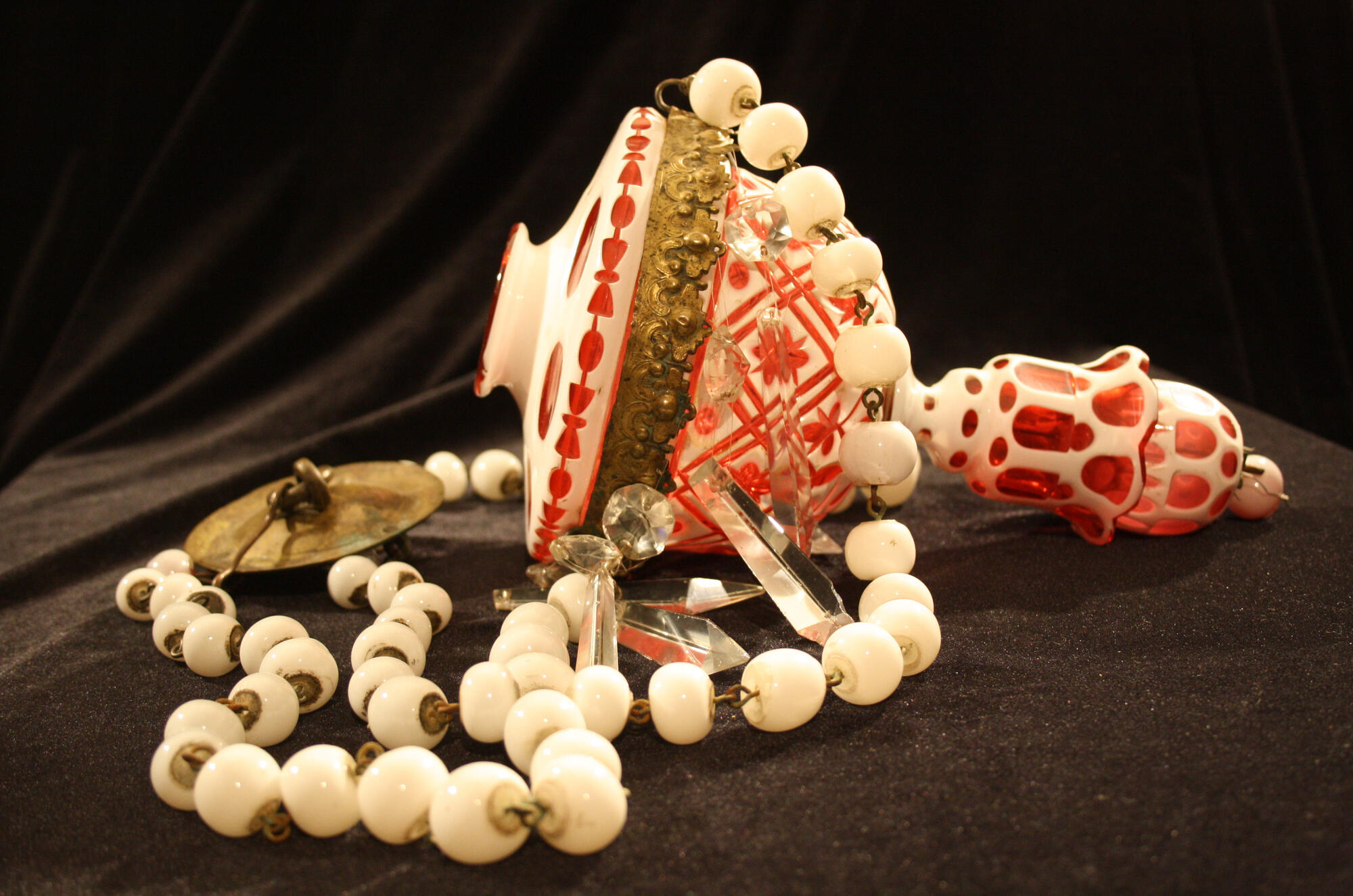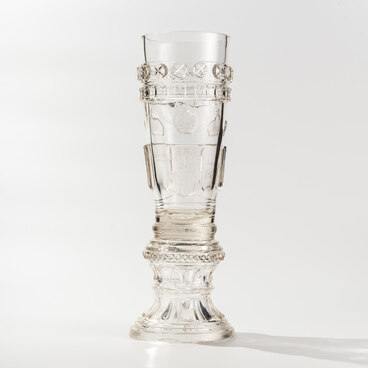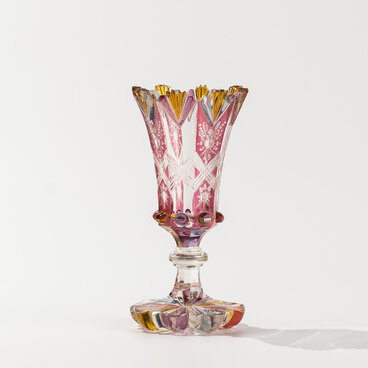In Russian, an icon lamp is known as a “lampada”, “lampadary”, or “lampadofor”. These terms originated from the Greek words meaning “light, ” “lamp, ” and “torch”. In Byzantine and Russian churches, it is a lamp placed in front of an icon. It symbolizes the undying faith in Christ which drives away evil and unbelief. Icon lamps are considered to be one of the oldest elements of Orthodox church utensils.
An icon lamp is a vessel filled with oil that is lit in front of icons or at the top of large stationary candelabra. It consists of several parts: the “lamp holder” made of metal or, rarer, glass or porcelain, the “insert” — the cup that holds the oil, the “suspension” — the chain that is used to hang the lamp, and the “smoke bonnet” that catches the soot. The art of creating glass inserts for icon lamps required special skills and was very important in Russia. Colored glass icon lamps decorated with cuts and patterns were known as “Russian-style” lamps in the Orthodox world.
The Dyatkovo Crystal Factory started producing icon lamps and church utensils in the first half of the 19th century when the construction of the Transfiguration Cathedral was completed. This building helped to discover the unlimited potential of crystal and colored glass in interior design. The cathedral was built in 1810 at the expense of Ivan Maltsov. According to the memories of contemporaries and existing descriptions, the cathedral looked magnificent: all the church utensils, including ceiling lamps, chandeliers, and candlesticks, were made of colored glass and crystal.
The item from the museum collection is made of three layers of glass — colorless, “gold ruby”, and milky. The dome-shaped body is encased in a hammered metal band and decorated with a deep-cut pattern using such techniques as “pits”, “fingers”, and “nets” made of paired V-shaped cuts. Special holes in the metal band are used to attach glass suspensions consisting of two separate parts. A decorative element is attached to the bottom part of the body using a metal rod. At the end of the lamp is a bead made of milky glass. The smoke bonnet is produced of metal. The suspension is also made of milky glass beads.
An icon lamp is a vessel filled with oil that is lit in front of icons or at the top of large stationary candelabra. It consists of several parts: the “lamp holder” made of metal or, rarer, glass or porcelain, the “insert” — the cup that holds the oil, the “suspension” — the chain that is used to hang the lamp, and the “smoke bonnet” that catches the soot. The art of creating glass inserts for icon lamps required special skills and was very important in Russia. Colored glass icon lamps decorated with cuts and patterns were known as “Russian-style” lamps in the Orthodox world.
The Dyatkovo Crystal Factory started producing icon lamps and church utensils in the first half of the 19th century when the construction of the Transfiguration Cathedral was completed. This building helped to discover the unlimited potential of crystal and colored glass in interior design. The cathedral was built in 1810 at the expense of Ivan Maltsov. According to the memories of contemporaries and existing descriptions, the cathedral looked magnificent: all the church utensils, including ceiling lamps, chandeliers, and candlesticks, were made of colored glass and crystal.
The item from the museum collection is made of three layers of glass — colorless, “gold ruby”, and milky. The dome-shaped body is encased in a hammered metal band and decorated with a deep-cut pattern using such techniques as “pits”, “fingers”, and “nets” made of paired V-shaped cuts. Special holes in the metal band are used to attach glass suspensions consisting of two separate parts. A decorative element is attached to the bottom part of the body using a metal rod. At the end of the lamp is a bead made of milky glass. The smoke bonnet is produced of metal. The suspension is also made of milky glass beads.


